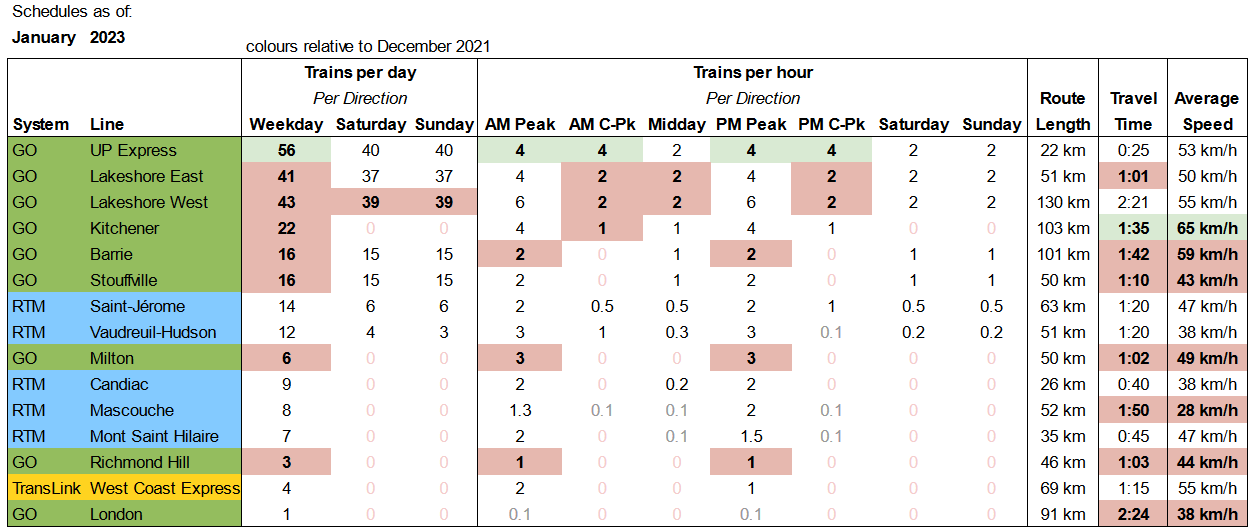Deadpool X
Senior Member
GO already operates the Lakeshore lines at frequencies around every 7 to 9 minutes during rush hour....
You both are proving my point. Which is that busiest GO lines already have a frequency that is acceptable to most. Increasing frequency from here won't bring tons of new riders. Keyword being "tons of". People here are expecting multifold increase in ridership. Yes, the ridership can double in 20 years but that will be mostly because of population growth and increasing congestion. How many people do you know are not using GO because their frequency is 30 minutes but would have used it if it were running at 10 min intervals?The Lakeshore lines have better than 15-minute service right now during rush hours, and had 15-minute or better service all day in Fall 2021. Unfortunately that service level didn't last very long.
Lakeshore West, October 2021, From my GO Schedule Archive:
View attachment 528016
New lines (such as Bolton or Midtown), much better speeds, lower fares, etc. can bring a lot more net new riders.





